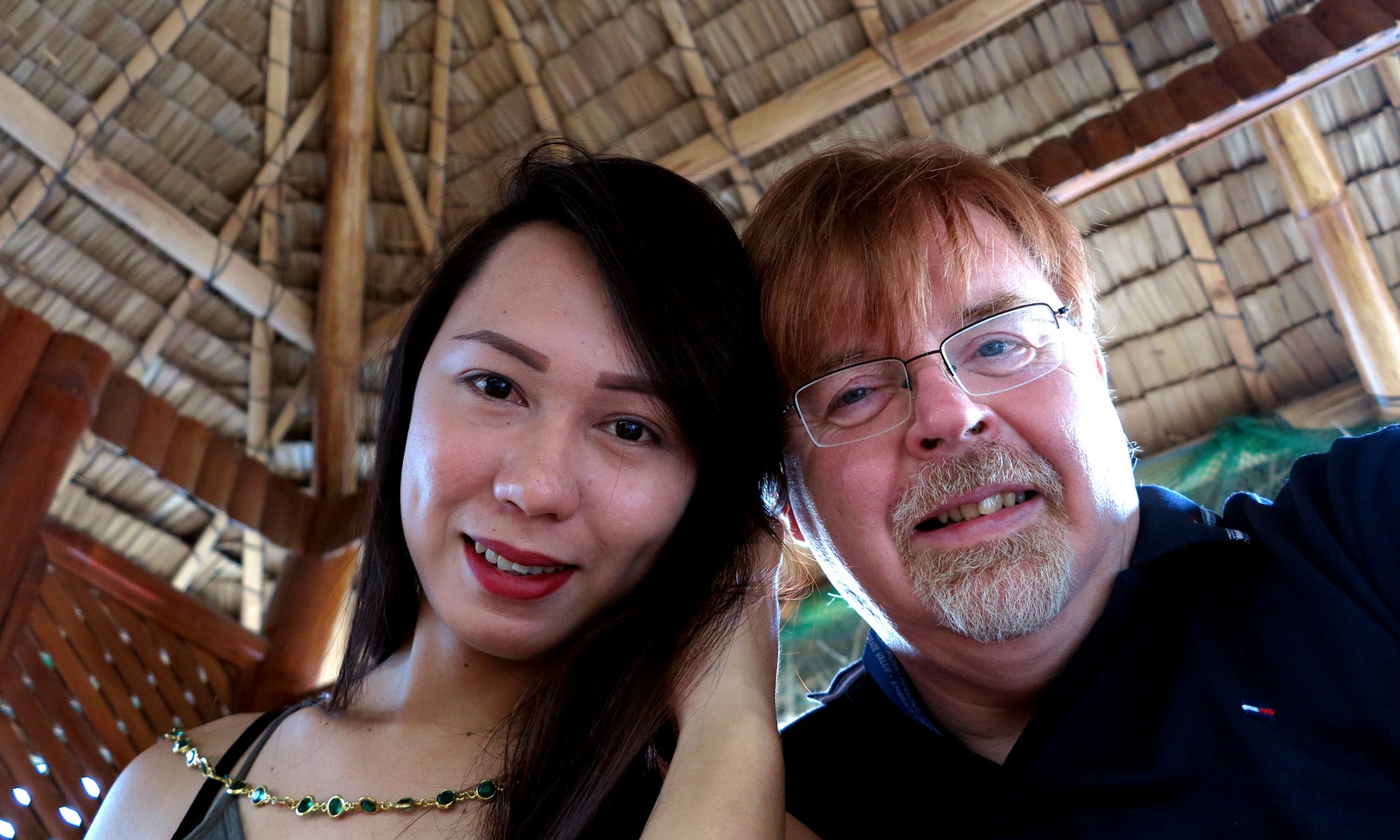Originally posted 2017-09-01 11:11:57.
Although this is often deliberately obscured, there is actually a significant amount of scientific literature on the subject of transsexualism or transgender, particularly Male-to-Feminine (Male sex, Feminine gender.) I have linked to the most important papers below and have commented on some.
Essentially, the so-called ‘Feminine Essence’ hypothesis, which is often touted by propagandists for one type of MtF, for example Julia Serano, who is actually autogynephilic, has absolutely no basis in science at all. It is an artefact of Postmodernism and Serano, in espousing the hypothesis and deliberately ignoring the actual science, betrays an underlying hostility to science that is typical of Postmodernists.
We know what causes transsexualism. Both types are firmly rooted in sex drive and sexuality.
More links to scientific papers on related topics can be found here.
Enjoy reading!
Transsexualism and transgender
Auer M K. Transgender Transitioning and Change of Self-Reported Sexual Orientation. http://www.ncbi.nlm.nih.gov/pmc/articles/PMC4192544/
Bakker A The prevalence of transsexualism in The Netherlands. 1993. https://www.ncbi.nlm.nih.gov/pubmed/8488743
Abstract
The prevalence of transsexualism in the Netherlands was estimated by counting all the subjects who were diagnosed as transsexuals by psychiatrists or psychologists and were subsequently hormonally treated and generally underwent sex-reassignment surgery. At the end of 1990, 713 Dutch-born transsexuals received treatment (507 men, 206 women). This amounts to a prevalence of 1:11,900 for male-to-female transsexualism and 1:30,400 for female-to-male transsexualism (population age 15 and above in both groups). The sex ratio was about 2.5 men to 1 woman. The most important reason for this relatively high prevalence seems to be the benevolent climate for the treatment of transsexualism in the Netherlands.
My Note: The statistical difference between MtF and FtM in this study is around 3:1. This correlates closely to observation in cultures where transsexual presentations are readily visible. The disparity might be accounted for by the fact that autogynephilia (AGP) or its theoretical equivalent ‘autoandrophilia’ has never been shown to occur in females. As I have observed elsewhere, ‘transmen’ are either HSTS (females attracted uniquely to other females and presenting as men) or demonstrating a socio-political expression in which they ‘become’ men in order to dominate men.
This would also give us a rough baseline for the relative numbers of HSTS and AGP MtF, at about 1:3 which again is consistent with observation.
Bentler, P. A typology of transsexualism: Gender identity theory and data. https://www.researchgate.net/publication/22145678_A_typology_of_transsexualism_Gender_identity_theory_and_data
This paper pre-dates Blanchard and in it the authors describe three types of transsexual: homosexual, asexual and heterosexual. Blanchard was able to reconcile the two latter groups into one, autogynephilic.
Blanchard, R, The Concept of Autogynephilia and the Typology of Male Gender Dysphoria. https://www.researchgate.net/publication/20361233_The_Concept_of_Autogynephilia_and_the_Typology_of_Male_Gender_Dysphoria
Note: This is paper sets out the basis of Blanchard’s typology. The appendix contains his questionnaires. One of the most important sentences in it is this:
‘the central prediction of the present study, namely, that autogynephilic behavior will be reported more frequently by non-homosexual than by homosexual gender dysphorics.’ (My emphasis and NOTE: Blanchard has never claimed that autogynephilic behaviour was exclusive to non-homosexual transsexuals. That is one of the straw-man arguments put forward by AGP propagandists.)
It has been the consistent attempt of Western autogynephilic propagandists to attack Blanchard for making what they call ‘generalisations’. That is a blatant misrepresentation. Blanchard, in all his papers, is careful not to go beyond the science. This is demonstrated here. Unfortunately, too many people with a Humanities background, and who do not understand that science is about finding reasonable explanations for observed phenomena, think that their philosophical conjectures are somehow worthwhile.
Blanchard, R. A History of Autogynephilia (pdf) Blanchard- History of Autogynephilia
Blanchard, R. Typology of male-to-female transsexualism http://link.springer.com/article/10.1007/BF01542107
Blanchard, R. The classification and labeling of nonhomosexual gender dysphorias http://link.springer.com/article/10.1007/BF01541951
Blanchard R, Collins PI., “Men with sexual interest in transvestites, transsexuals, and she-males”
http://www.ncbi.nlm.nih.gov/pubmed/8245926
Blanchard R., “The she-male phenomenon and the concept of partial autogynephilia”
http://www.informaworld.com/smpp/content~db=all~content=a789560133
Blanchard R,et al. Comparison of height and weight in homosexual versus nonhomosexual male gender dysphorics. http://link.springer.com/article/10.1007/BF01541833
Bockting et al. Gay and bisexual identity development among female-to-male transsexuals in North America: emergence of a transgender sexuality. https://www.ncbi.nlm.nih.gov/pubmed/19330439
Bullough, Vern L. Transgenderism and the Concept of Gender https://www.atria.nl/ezines/web/IJT/97-03/numbers/symposion/bullough.htm
Campbell, Natalie M. Nuclear family dynamics: Predictors of childhood crushes and adult sexual orientation 2015 http://mds.marshall.edu/cgi/viewcontent.cgi?article=1949&context=etd
Clemens, B. Male‐to‐female gender dysphoria: Gender‐specific differences in resting‐state networks 2017 (full) https://www.ncbi.nlm.nih.gov/pmc/articles/PMC5434195/
Abstract
Introduction
Recent research found gender‐related differences in resting‐state functional connectivity (rs‐FC) measured by functional magnetic resonance imaging (fMRI). To the best of our knowledge, there are no studies examining the differences in rs‐FC between men, women, and individuals who report a discrepancy between their anatomical sex and their gender identity, i.e. gender dysphoria (GD).
Conclusion
Our results provide first evidence that MtFs exhibit patterns of rs‐FC which are different from both their assigned and their aspired gender, indicating an intermediate position between the two sexes. We suggest that the present study constitutes a starting point for future research designed to clarify whether the brains of individuals with GD are more similar to their assigned or their aspired gender.
Dreger, Alice D. The Controversy Surrounding The Man Who Would Be Queen: A Case History of the Politics of Science, Identity, and Sex in the Internet Age 2008 https://www.ncbi.nlm.nih.gov/pmc/articles/PMC3170124/
Freund, K. et al. Two types of cross-gender identity http://link.springer.com/article/10.1007/BF01541365
Green et al. Specific cross-gender behaviour in boyhood and later homosexual orientation. http://www.ncbi.nlm.nih.gov/pubmed/3676630
Green, R. Gender Identity in Childhood and Later Sexual Orientation: Follow-Up of 78 Males (1983) (abstract)
http://citeseerx.ist.psu.edu/viewdoc/summary?doi=10.1.1.456.7071
Guillamon, A, et al. A Review of the Status of Brain Structure Research in Transsexualism http://link.springer.com/article/10.1007/s10508-016-0768-5
Hare et al. Androgen receptor repeat length polymorphism associated with male-to-female transsexualism.http://www.ncbi.nlm.nih.gov/pubmed/18962445
Abstract
Background
There is a likely genetic component to transsexualism, and genes involved in sex steroidogenesis are good candidates. We explored the specific hypothesis that male-to-female transsexualism is associated with gene variants responsible for undermasculinization and/or feminization. Specifically, we assessed the role of disease-associated repeat length polymorphisms in the androgen receptor (AR), estrogen receptor β (ERβ), and aromatase (CYP19) genes.
Results
A significant association was identified between transsexualism and the AR allele, with transsexuals having longer AR repeat lengths than non-transsexual male control subjects (p = .04). No associations for transsexualism were evident in repeat lengths for CYP19 or ERβ genes. Individuals were then classified as short or long for each gene polymorphism on the basis of control median polymorphism lengths in order to further elucidate possible combined effects. No interaction associations between the three genes and transsexualism were identified.
Hsu, Rosenthal, Miller and Bailey, “Who are gynandromorphophilic men? Characterizing men with sexual interest in transgender women”
http://d-miller.github.io/assets/HsuEtAl2015.pdf
Note: The two papers above are essential reading both for men attracted to transwomen and transwomen attracted to men. Gyandromorphophilia is a rather common but poorly understood orientation. There are at least two types of Gynandromorphophilic (GAMP) men. These types are not equally suited to both types of MtF transwoman. It were wise, therefore, to understand this. I will do a full post on this soon.
Lagos et al. Regional Grey Matter Structure Differences between Transsexuals and Healthy Controls—A Voxel Based Morphometry Study. 2013. http://journals.plos.org/plosone/article?id=10.1371/journal.pone.0083947
Lawrence, Dr A. Do Some Men Who Desire Sex Reassignment Have a Mental Disorder? Comment on Meyer-Bahlburg (2010) 2011
www.annelawrence.com/desire_for_sr_a_mental_disorder.html
Lawrence, A. Autogynephilia: A Paraphilic Model of Gender Identity Disorder.http://www.annelawrence.com/autogynephilia,_a_paraphilic_model_of_GID.pdf
Lawrence, Anne A. Autogynephilia and Heterosexuality 2012 https://link.springer.com/chapter/10.1007/978-1-4614-5182-2_7
Lawrence, A. Further Validation of Blanchard’s Typology: A Reply to Nuttbrock, Bockting, Rosenblum, Mason, and Hwahng (2010) https://www.researchgate.net/publication/50196878_Further_Validation_of_Blanchard’s_Typology_A_Reply_to_Nuttbrock_Bockting_Rosenblum_Mason_and_Hwahng_2010
Lawrence, Anne A. Clinical and Theoretical Parallels Between Desire for Limb Amputation and Gender Identity Disorder 2006 http://www.annelawrence.com/amputation-GID.pdf
Lawrence Anne A. Erotic Target Location Errors: An Underappreciated Paraphilic Dimension http://www.jstor.org/stable/pdf/20620414.pdf?seq=1#page_scan_tab_contents
Abstract
Based on studies of heterosexual male fetishists, transvestites, and transsexuals, Blanchard (1991) proposed the existence of a hitherto unrecognized paraphilic dimension, erotic target location errors (ETLEs), involving the erroneous location of erotic targets in the environment. ETLEs can involve preferential attention to a peripheral or inessential part of an erotic target, manifesting as fetishism, or mislocation of an erotic target in one’s own body, manifesting as the desire to impersonate or become a facsimile of the erotic target (e.g., transvestism or transsexualism). Despite its potential clinical and heuristic value, the concept that ETLEs define a paraphilic dimension is underappreciated. This review summarizes the studies leading to the concept of ETLEs and describes how ETLEs are believed to manifest in men whose preferred erotic targets are women, children, men, amputees, plush animals, and real animals. This review also describes ETLEs in women; discusses possible etiologies of ETLEs; considers the implications of the ETLE concept for psychoanalytic theories of transvestism and male-to-female transsexualism, as well as for the forthcoming revision of the Diagnostic and Statistical Manual of Mental Disorders, Fifth Edition; suggests reasons why the concept of ETLEs has been underappreciated; and describes what might result if the concept were more widely appreciated.
Li et al. Childhood Gender-Typed Behavior and Adolescent Sexual Orientation: A Longitudinal Population-Based Study. 2016. https://www.repository.cam.ac.uk/bitstream/handle/1810/262671/Li_et_al-2017-Developmental_Psychology-AM.pdf
Moser, C. Blanchard’s Autogynephilia Theory: A Critique http://www.tandfonline.com/doi/pdf/10.1080/00918369.2010.486241
Nuttbrock et al. A Further Assessment of Blanchard’s Typology of Homosexual Versus Non-Homosexual or Autogynephilic Gender Dysphoria. http://www.ncbi.nlm.nih.gov/pmc/articles/PMC2894986/
Paul, JP. Childhood cross-gender behavior and adult homosexuality: the resurgence of biological models of sexuality. http://www.ncbi.nlm.nih.gov/pubmed/8505540
http://www.ncbi.nlm.nih.gov/pubmed/20562024
Savic & Arver. Sex dimorphism of the brain in male-to-female transsexuals. 2011 http://www.ncbi.nlm.nih.gov/pubmed/21467211
Smenenyna, S et al. The Relationship between Adult Occupational Preferences and Childhood Gender Nonconformity among Samoan Women, Men, and Fa’afafine. https://www.researchgate.net/publication/301551770_The_Relationship_between_Adult_Occupational_Preferences_and_Childhood_Gender_Nonconformity_among_Samoan_Women_Men_and_Fa’afafine
Veale, Clarke and Lomax, “Sexuality of Male-to-Female Transsexuals”
http://www.springerlink.com/content/bp2235t8261q23u3/
Weinberg MS et al. Men sexually interested in transwomen (MSTW): gendered embodiment and the construction of sexual desire.2010 https://www.ncbi.nlm.nih.gov/pubmed/19544216
Winter S, Udomsak N (2002) Male, Female and Transgender : Stereotypes and Self in Thailand. http://www.transgenderasia.org/paper_male_female.htm
Winter S. Gender Stereotype and Self among Transgenders: Underlying Elements. http://www.transgenderasia.org/paper_gender_stereotype.htm
Winter S. Language and Identity in Transgender. http://www.transgenderasia.org/paper-languageandidentity.pdf
Winter S and King M. Well and Truly Fucked: Transwomen, Stigma, Sex Work and Sexual Health. http://www.transgenderasia.org/paper-wellandtruly.pdf
Winter, S. Transpeople (Khom Kham Phet) in Thailand. http://www.transgenderasia.org/paper-khonkhamphet.pdf
Zucker, K. et al. Physical attractiveness of boys with gender identity disorder http://link.springer.com/article/10.1007/BF01552910






Great resource to have all the significant scientific studies in one place.
This website is suppose to give you access to any research paper.
https://sci-hub.se/
Yes, I recommend it on the Links Page. It’s good but it moves around lol